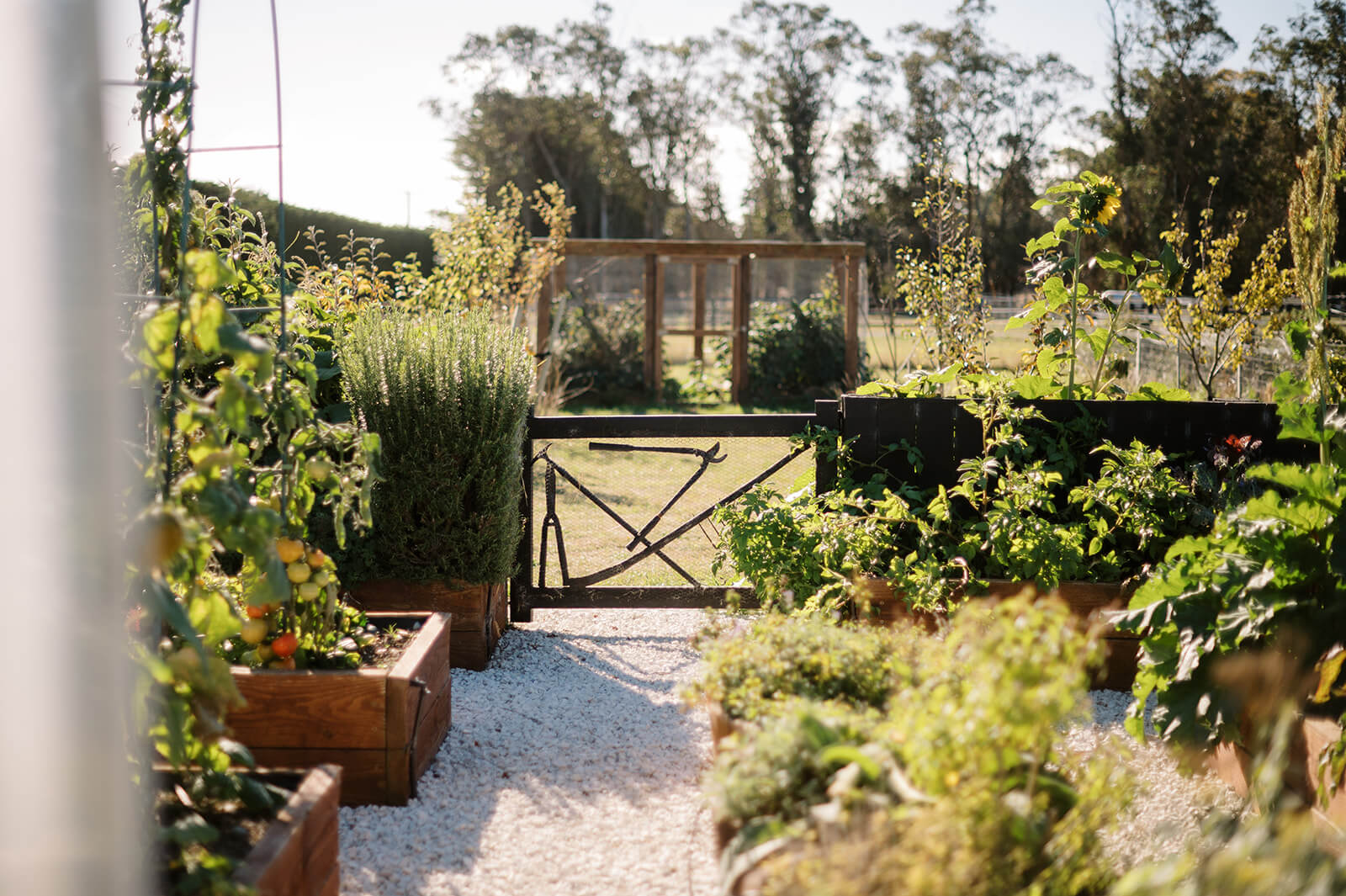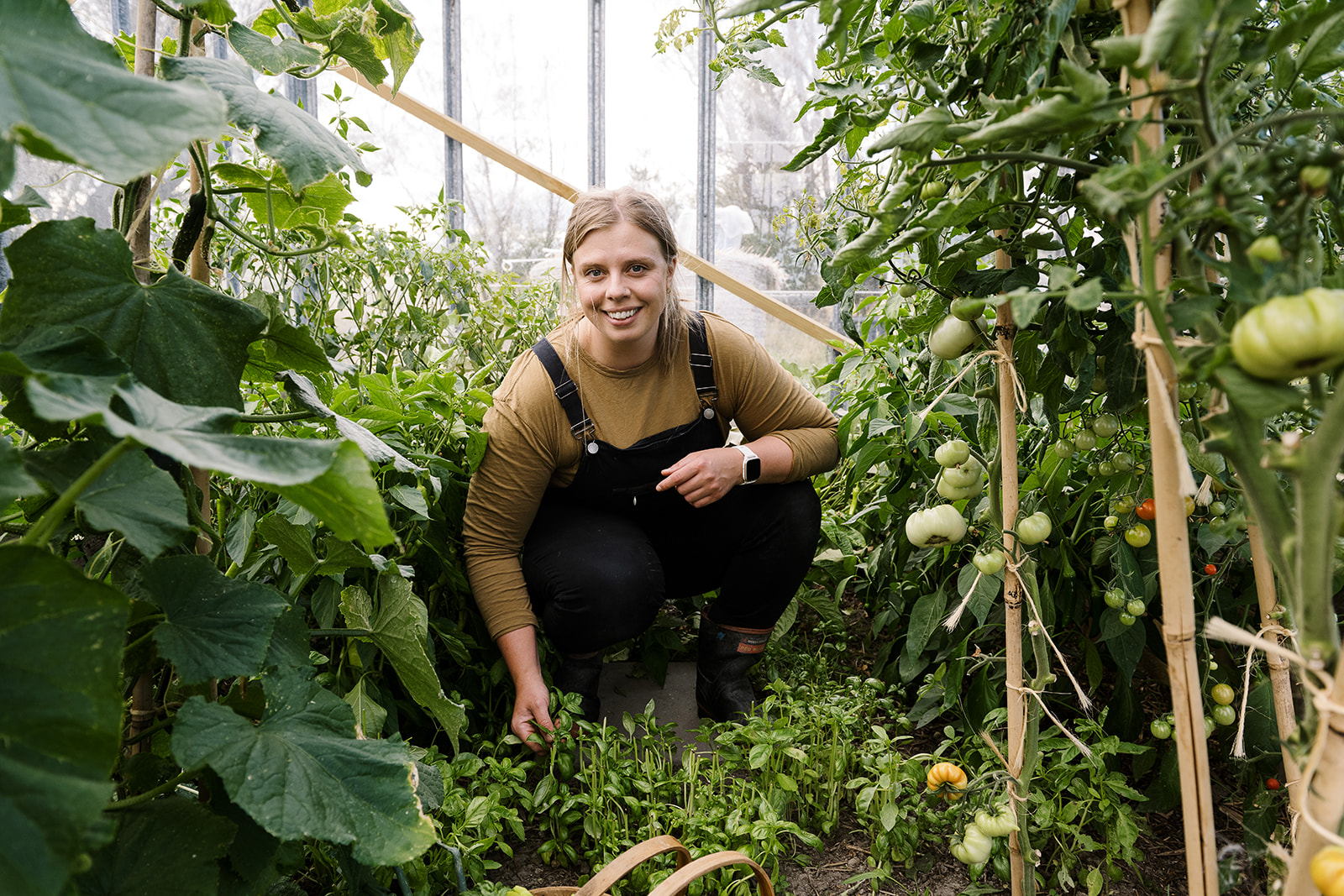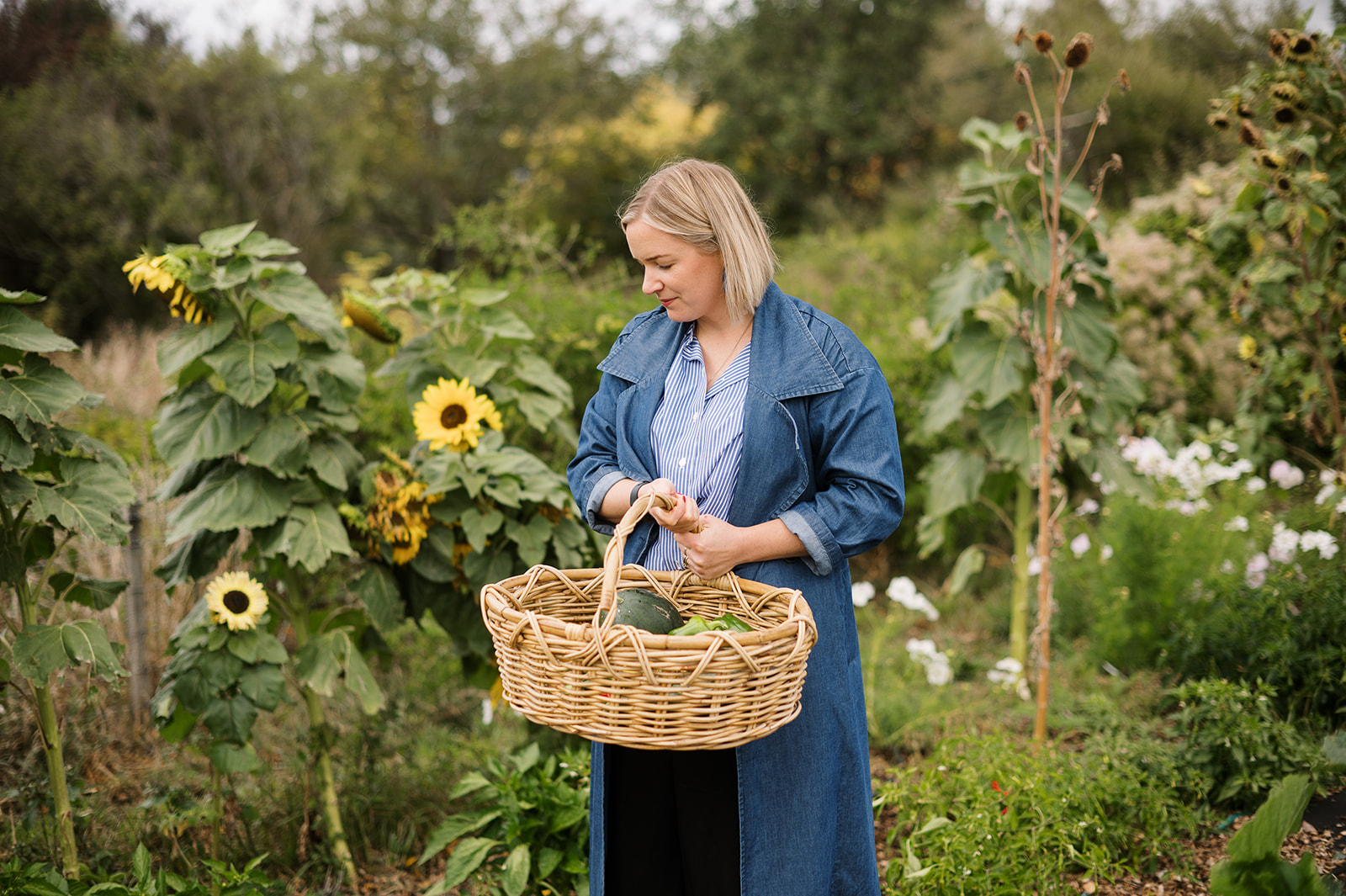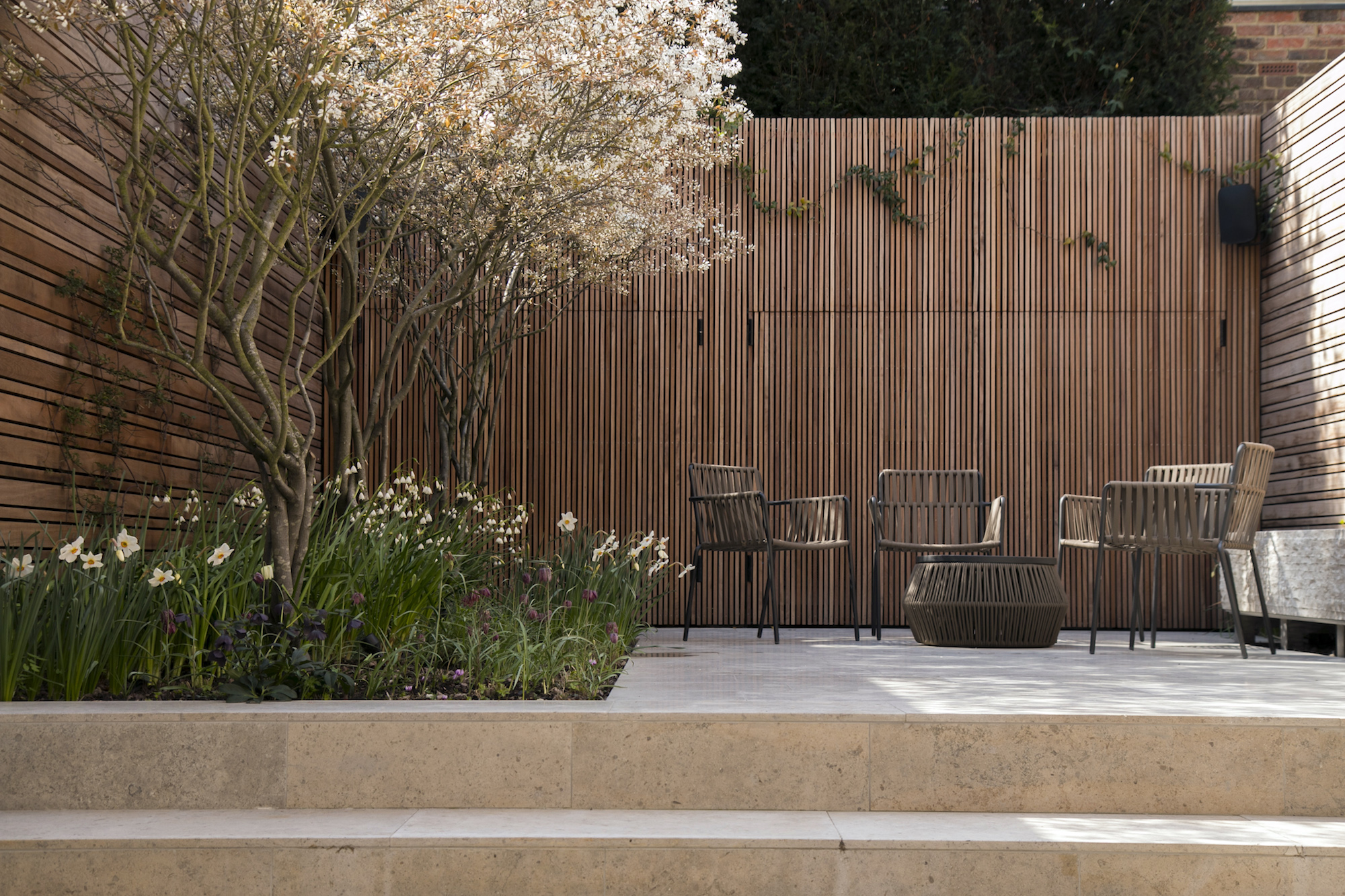A story brought to you in partnership with Goodnature.
In the farming town of Seafield in the Ashburton District, Stevie Young’s garden stands as a testament to a dedication and passion for simple and sustainable living. Along with her fiancé, Ryan, their two cats Herbie and Albie, Stevie’s horses and their backyard chickens, life on the wagyu and crop farm is never dull.
Four years ago, as the world grappled with the uncertainty of the COVID-19 pandemic, Stevie and Ryan found themselves embarking on a new chapter. On the eve of New Zealand’s first ‘lockdown’ they were handed the keys to their brand new home. Seizing the opportunity of a world pulled to a halt, they immediately began work on transforming a piece of their land into a thriving edible garden.

Stevie and one her of cats, Albie.
Stevie is inspired by both her gardening mother, and her grandmother’s legacy whose backyard was a “jungle of vegetables.” Stevie recalls, “she was a beautiful, little woman who was an influence to me from a really young age.” Memories like these are what drives Stevie’s passion for growing her own food. Blackcurrants and redcurrants, propagated from cuttings of her grandmother’s original plants, now border her garden – a living tribute to the matriarch whose green thumb still guides her hand.
With full-time jobs occupying much of their time, Stevie and Ryan started their gardening journey with a clear vision — to build a plot that’s not just productive but also robust and resilient. Their commitment to longevity is evident in every aspect of their garden, from sturdy structures designed to withstand the test of time, and carefully selected trees and crops.
Driven by a desire to encourage and inspire others, Stevie documents her gardening adventures on Instagram, finding kindred spirits along the way. Her ultimate goal is to empower individuals to reclaim the lost art of growing their own food (or at least make sure they know where their food comes from!). “Even if they just grow a pot of herbs by the sink,” says Stevie.

One of Stevie’s cats, Herbie.

Stevie is preparing for her upcoming wedding in Wānaka, where she and Ryan met climbing a mountain six years ago. In the plans for her wedding, her dedication to self-sufficiency continues to take centre stage. Stevie has spent the past several months taking on the monumental task of growing and harvesting all the vegetables for her wedding banquet — a feat that showcases her resourcefulness and unwavering commitment to self-sufficiency. To complement the homegrown produce, they’re serving their guests wagyu beef sourced from their own farm and crayfish caught by her skipper father.
This endeavour isn’t just about showcasing Stevie’s growing skills — it’s a reflection of her family’s ethos of generosity and hospitality. When she told her dad of this dream for her wedding, he replied, “It’s just who we are.” For Stevie there lies her lifetime of lessons learned from helping her family run a boutique wedding venue – a journey that shaped a passion for hospitality and serving others.





Looking to the future, Stevie dreams of expanding her garden to include a more diverse array of plants, from fragrant herbs for homemade herbal teas to exotic spices, and even ginger. And plans for a permaculture ‘food forest’ are underway. Her goal? To produce as much food as possible and continue to reduce her reliance on store-bought goods.
As Stevie showed us around her patch, she shared her pride in how far they’d come in just four short years, when the bare land was nothing but potential. She feels settled in knowing that she’s heading in the right direction, forging a path to a more sustainable and balanced life, taking others with her on the journey – one season at a time.
With each meal shared and each seed sown, she’s proving that a little dirt under your nails can lead to a lot of satisfaction in life.

A ‘Flipping Timmy’ possum trap in Stevie’s orchard area.

Stevie’s seasonal garden changes & challenges:
Autumn —
Stevie’s autumn garden priority is still growing and harvesting food for her wedding – very patiently waiting for her carrots to grow big enough!
This summer she’s grappled with a major slug issue, keeping her on her toes as they have eaten their way through her brassicas and many other veggies. Wasps have also been a problem, hanging about her fruit trees. And flies! All over her citrus trees that she’s tucked in for shelter and warmth around the perimeter of the house.

This summer Stevie’s grappled with a major slug issue.

Stevie and one of her chief pest controllers, Albie.
And in terms of four-legged pests, they know that as the crops on the farm come off, in come the mice. They’ve previously relied on their two feline friends, Herbie and Albie to take care of them, but with sheds full of horse feed, chickens, paddocks of crops and a vegetable garden teeming with food, they’ve ramped up their protection with two Goodnature traps.
They’ve got Goodnature Smart Trap Kits for use around the farm sheds where rats and mice are attracted by the feed and pumpkins being stored, and in the garden where rodents love the chickens and veggie gardens. They’re also vigilant about keeping possum traps set around the orchard, where they’ve had trees completely stripped in the space of an evening on several occasions.
–
“Farmers often tell us they feel like they’re fighting a losing battle against pests on their farms. It’s not surprising – animal feed, crops, booming veggie gardens, and stored garlic, potatoes and pumpkins make farms like Stevie’s a year-round buffet for rats and mice. I’d recommend steering clear of toxins – the chance of working animals eating a toxin-laced dead rat or mouse is just too high. Instead invest in the toughest, lowest-maintenance trap you can afford. Goodnature traps tick those boxes, but there’s a few other traps like DOC200s and Flipping Timmy’s that get pretty close. And make sure it’s a trap that can be easily moved – rats and mice will move with the food, so you want a trap that can follow them around the farm!”
– Craig Bond, Goodnature Co-founder






This article was brought to you by Goodnature.
A little about Goodnature, and why we support their kaupapa
Born out in the New Zealand bush, Goodnature’s revolutionary traps are toxin-free, built to last, a pleasure to use and respectful to the pests they kill. They’re big believers that less pests equals more nature, and with almost half a million Goodnature traps in homes, backyards, forests and farms around the world, that belief is becoming reality one pest at a time.
Words by Emma Sage | Photography by Natalie McNally





